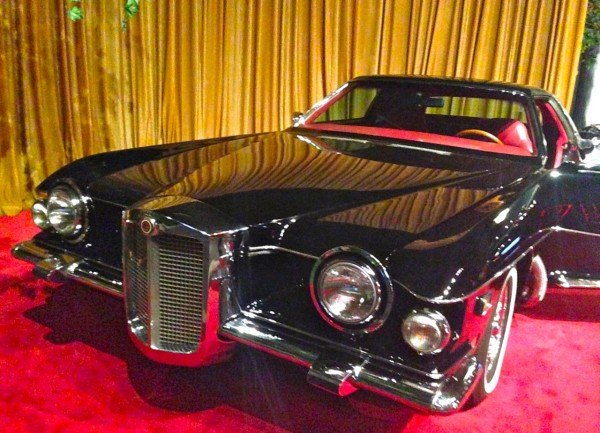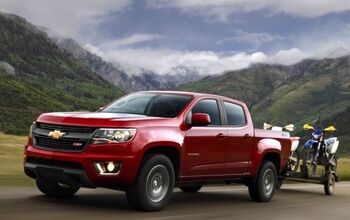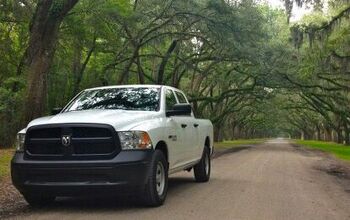Best Selling Cars Around The Globe: Coast to Coast 2014 – The Cars of Elvis Presley
You can check out all the Coast to Coast 2014 updates as they get published here.
Today we stay in Memphis as in my opinion the one attraction really worth seeing in town is Graceland, the home of Elvis Presley. I wasn’t expecting much, but was pleasantly surprised with the tour’s thoroughness, the extravagant decoration and endless flow of music sales records detailed on the self-guided iPad tour. My never-ending thirst for stats was quenched here, and that says a lot! It was also an opportunity to go beyond the singer’s most commonly played hits and discover gems like ‘She’s not you’, ‘Good luck charm’, ‘The Girl of my best friend‘ or ‘Return to sender‘. Most significantly (and relevantly), there is also a car museum displaying a collection of cars Elvis owned. I have ranked the most stylish Elvis cars here along with detailed background info about each model. Yes this is absolutely and unashamedly subjective. The full ranking is below the jump.
Not only is this in my view the coolest-looking car Elvis ever owned, there is also a fascinating story attached to it. The Stutz Motor Company is an American luxury car company from Indianapolis, Indiana that produced America’s first sports car from 1911 to 1935. The Stutz brand was ressucitated in 1968 (to survive until 1995) by New York banker James O’Donnell, who hired retired Chrysler stylist Virgil Exner to design the new Blackhawk. A first Stutz Blackhawk had been produced between 1929 and 1930, but this second generation, manufactured between 1971 and 1987, bears absolutely no resemblance to it.
Mouth-watering design features include a massive and aggressive grille, freestanding headlamps and a spare tire protruding through the trunklid. It’s like one car rebelled against all design conventions and revived them all at once. Now onto some technical specs. To try and keep in line with the brand’s exclusive origins, the body, designed by Ghia, was custom built in Italy, shipped to the US and fitted on a powerful but all-in-all arguably relatively common GM platform and engine. The Blackhawk used Pontiac Grand Prix running gear, Pontiac’s 7.5 L V8 engine, and a GM TH400 3-speed automatic transmission. The Blackhawk’s engine was tuned to produce 425 hp (317 kW) and 420 ft·lbf (570 N·m), enabling the 5000 lb (2300 kg) Blackhawk to accelerate to 60 mph (97 km/h) in 8.4 seconds with a 130 mph (210 km/h) top speed. All this for decidedly paltry (but ok for the times and the car’s weight/engine size) 8 mpg. That’s 30 L/100 km for you readers outside the USA. Ford, Chevrolet and Cadillac engines were also used at some stage. Another piece of trivia: the 18 to 22 hand-rubbed lacquer paint coats required to finish up the car took six weeks to apply, adding up to a total production time for each vehicle of over 1500 man-hours.
But wait there’s more prestige inside: the interior included 24-carat gold plated trim and bird’s eye maple or burled walnut and redwood, Connolly leather seats and dash, instrument markings in both English and Italian, fine wool or mink carpeting and headlining, a cigar lighter, and a liquor cabinet in the back. Other special features included automatic headlamp control with twilight sensor, cornering lamps, bilevel automatic airconditioning, Superlift air adjustable shockabsorbers, Safe-T-Track limited slip differential, an electric sunroof, cruise control, central locking, a burglar alarm, non-functional exhaust side pipes, and a high-end Lear Jet AM/FM 8-track quadraphonic sound system. The first models had special 17-inch Firestone LXX run-flat tires and rims fitted, although these were taken off the market when it was found they were unsafe.
Commercially, the Blackhawk remained a very exclusive car all through its 17 year-long career: only 500 to 600 units were produced in total. It debuted in January 1970 at the Waldorf Astoria in New York City, priced from US$22,500 to US$75,000, that’s US$120,000 to $400,000 in today’s dollars… And this is where things take a truly fascinating turn: Elvis Presley and Frank Sinatra competed to purchase the very first Blackhawk to be put on sale! Talk about exclusive and prestigious… This was the second Blackhawk prototype, as built by Carrozzeria Padane (the first one, built by Ghia, was driven by James O’Donnell himself). The legend goes that Sinatra was offered the second prototype on the condition that the distributor could show the car at the L.A. auto show and get PR photos with Sinatra upon delivery. Sinatra declined, but Presley accepted and got the car, which he purchased for US$26,500 on October 9, 1970. In January 1971, Presley even had a mobile telephone installed inside it for US$1,467.50!
In July 1971, one of Presley’s hired drivers destroyed the car, which was restored with non-original parts after Presley’s death. Elvis bought at least three more Blackhawks and leased one other. The black 1973 pictured above and exposed in Graceland was his favorite Blackhawk, which he purchased at the end of the lease. Its interior features custom-ordered red leather seats. Elvis was driving this car when he drove through the gates of Graceland for the last time on August 16, 1977.
Elvis purchased this Dino 308 GT4 secondhand in October 1976 for US$20,583. Interestingly, the “Dino” brand was created by Ferrari to market more affordable sports cars aimed at competing with the Porsche 911 as Enzo Ferrari feared the Ferrari brand would be watered down with cheaper cars. The “Dino” marque was reserved for mid-engined, rear-drive sports cars and used for models with engines with fewer than 12 cylinders. So this was not typically the type of vehicle you’d expect the biggest star on the planet to purchase at the time, let alone secondhand. The Ferrari name remained reserved for its premium V-12 and flat 12 models until 1976, when “Dino” was retired in favour of full Ferrari branding. Thus Elvis’ car does have a “Dino” badge, and no Ferrari one, even though by the time he purchased the car the “Dino” brand had already disappeared, making this model an instant collector.
But why “Dino”? This was simply the nickname of Ferrari founder Enzo Ferrari’s late son and heir Alfredo “Dino” Ferrari, who was credited with the design of the V6 engine used by the marque to justify the branding, however it was found later on that Alfredo Ferrari did not have any role in that design – awkward. At the time, setting a production car with a mid-engine layout was very avant-garde, although common in car racing. A mid-engined layout placed more of the car’s weight over the driven wheels, and although it enabled great design in the shape of a streamlined nose, it led to almost no passenger space and very abrupt handling, thought better reserved to professional sports drivers. For this reason Ferrari did not trust his customers would be able to ‘tame’ this type of layout and originally refused to produced one – with the consequence being that Lamborghini was the first to shoot with its mid-engined Miura in 1966.
The original mid-engined “Dino” (206/246) saw the light of day only because Ferrari rationalised that the low-power V6 engine would not be powerful enough to make handling unsafe even for relatively inexperienced drivers. The original 308 GT4 was designed by Bertone and produced from 1973 to 1980. It was Ferrari’s first V8 production car. It had a 90-degree, dual-overhead-camshaft, 2927 cc motor with 4 Weber carburetors which produced 250 hp (186 kW) and the V-8 block and heads were made of an aluminum alloy. The compression ratio was 8.8:1. However the American version that Elvis purchased had a timing change and an air-pump and produced a more modest 230 hp (172 kW). The GT4 weighed 2535 pounds. The 308 GT4 was Dino-branded until May 1976, when it got the Ferrari badge on the hood, wheels, and the steering wheel.
After being used between 1939 and 1948, the Continental name was revived in 1955 but as a separate marque, produced by a separate division of Ford Motor Company, with its only model being the Continental Mark II. The plans for this revival were grand and Ford made it very clear that this Continental was NOT a Lincoln. Ahem, right. Another one of these interesting strategy decisions. An attempt at hyper luxury by Ford, the 1956 Continental Mark II was among the most expensive cars in the world when launched, with a price equivalent to one of a Rolls-Royce at $10,000 when a regular Ford could be bought for less than $2000 and a Cadillac for $4000. Ford believed that its price point would elevate the car’s status among those who could afford the very best. True, but it stayed there and never really bled onto the Lincoln or Ford brand images. Plus, despite its astronomical price tag, Ford lost money on each one sold (2,996 in total including two prototype convertibles), the same way Cadillac did with its Continental-fighting four-door Eldorado Brougham.
The thing that Ford did manage to do with the Continental Mark II is create a myth: it reported tales of dealers turning potential buyers away because deemed not to be the right kind of people to own one, its sticker price was delusional and made the Continental only affordable by an over-prestigious clientele: Elvis part of that cohort along with Frank Sinatra (again), the Shah of Iran, Nelson Rockefeller and Henry Kissinger. Warner Brothers Studios even gave Elizabeth Taylor a custom-built 1956 Mark II, which was painted to match her eye colour. Elvis arrived in Miami in August 1956 driving his new Lincoln that had been decorated in lipstick graffiti by fans He traded that car and purchased this Continental Mark II with the proceeds from his tour. He used this car often, even taking it to New Orleans in 1958 for the filming of his movie ‘King Creole’. A bit of trivia to finish on: while on later models it was purely for decoration, the original Mark II did in fact carry its spare tire under the trunk lid’s stamped-in tire cover.
Elvis’ Pink Cadillac is arguably one of the most iconic cars in the history of the United States. A lesser known fact is that it is also one of the few that Elvis kept from his rise to stardom: he actually purchased his original Pink Cadillac (there were two) before any of his songs became popular. Ha. Bet you didn’t know that one. The story goes like this: in early 1955 Elvis bought his first pink Cadillac, a 1954 Fleetwood Series 60, but this car was destroyed in a roadside fire in June of that year. Exactly one month later on July 5, 1955, Elvis purchased a new Cadillac Fleetwood Series 60, but in blue with a black roof. Having mentioned a Pink Cadillac in the song Baby, Let’s Play House, the first Elvis song to break onto a national chart (it went up to #5 on the Billboard Country Singles chart in July 1955), Elvis had the car repainted pink that year and by March 1956 the roof was painted white. Elvis gave this car to his mother Gladys as a gift, even though she never had a driver’s license.
Like a haute couture designer, Elvis launched the pink car colour fashion with the Pink Cadillac. At the time, Ford Motor Company was the only manufacturer to offer pink as a standard colour. This changed quickly as Elvis’ Pink Cadillac became iconic. Individual owners took it upon themselves to paint their cars various shades of pink, then progressively most manufacturers aligned themselves and offered pink as standard colour as well. Another interesting element is that although the original car was a 1955 four-door sedan, the more replicated version in popular culture is a pink 1959 Cadillac Series 62 Convertible, which have been sold as miniature replicas by the millions.
Let’s backtrack a bit and ask where the Fleetwood name comes from? The link with Cadillac goes back to 1925 when the manufacturer purchased the Fleetwood Metal Body Company in 1925. As such the Fleetwood Body Company began as a small community of coach-building craftsmen founded by Henry Fleetwood, near Lancaster in England in the 17th century. Its 300 year coach-building experience gave the Fleetwood Body Company a high reputation in automobile circles worldwide by the 1920s. Coachwork was built by Fleetwood for a variety of luxury makes through 1924, but were reserved exclusively for Cadillac once bought by them in 1925. From 1927 through 1934 all Cadillac series offered Fleetwood bodies as an option, but after that time Cadillac became more picky and offered Fleetwood bodies only its higher-end models. The Fleetwood script and crest would not appear on the exterior of any Cadillac until the 1947 model year when it appeared on the rear deck lid of the Sixty Special, the one purchased by Elvis in its 1955 iteration.
This was the last Cadillac Elvis bought and he was driving it himself the day prior to his death. In the mid-seventies, European luxury imports such as Mercedes-Benz and BMW were more and more popular in the US prompting Cadillac to reshuffle its range completely. The American manufacturer launched the Seville in 1975 as, interestingly, both the smallest and most expensive model in the lineup, turning their marketing and pricing strategies upside down. It was a big risk. Add to this the fact that the Seville was also designed to win back young American car buyers that were distancing themselves more and more from homegrown brands and especially Cadillac, and you come to an almost unsolvable problem as young American car buyers arguably find themselves at the more affordable end of luxury.
The Seville’s angular design would set the tone for GM styling for the next decade, and by extension of an American car design symbolic to that time and now rare on US roads. It was the first Cadillac to be engineered (shock, horror!) based on components previously used in a Chevrolet model: it is a heavily upgraded version of the rear-wheel drive X-body platform that underpinned the Chevrolet Nova. Official design specs detail a “wide chrome grille flanked by quadruple rectangular headlamps with narrow parking and signal lamps just below filled the header panel, while small wrap-around rectangular tail lamps placed at the outermost corners of the rear gave the appearance of a lower, leaner, and wider car.” It is assumed that the wrap-around taillights might have come from a design sketch of a rejected Coupe DeVille concept.
Other interesting official specs about this Cadillac Seville: it was almost 1,000 pounds (450 kg) lighter than the full-sized Deville, more expensive than every other Cadillac model (except the Series 75 Fleetwood factory limousines) at US$12,479, it was basically a commercial flop (43,772 1976 MY vehicles produced and 45,060 1977 MY) even though it spawned several imitators including as the Lincoln Versailles and Chrysler LeBaron/Fifth Avenue, and the first 2,000 units produced were identical in equipment and colour (Georgian silver) to make sure the quality of the initial production run would be optimal, which it was.
Arguably this Seville’s most interesting spec is its fuel economy, unheard of for a Cadillac at the time. The engine was an Oldsmobile-sourced 350 cu in (5.7 L) V8, fitted with Bendix/Bosch electronically controlled fuel injection, giving it a gas mileage of 17 MPG city and 23 MPG highway while the larger Deville and Fleetwood were still getting single digit gas mileage! A diesel 350 cu in (5.7 L) LF9 V8 was added in 1978, the first diesel engine offered in passenger vehicles in America. Final piece of trivia: the Seville was also manufactured in Iran under the brand name Cadillac Iran from 1978 to 1987 by Pars Khodro, which was known as “Iran General Motors” before the Islamic Revolution. A total of 2,653 Cadillacs were made in Iran during this period. This made Iran the only country assembling Cadillacs outside the U.S. until 1997 when the Opel Omega-based Cadillac Catera started being built in Germany for the U.S. market.
Ha. I’m sure Elvis would have loved to drive him.
Elvis purchased this 1962 Lincoln Continental in Vegas and got it customised to his specifications: white with a gold alligator top. The Continental was completely redesigned in 1961 by Elwood Engel into what was originally intended to be the 1961 Ford Thunderbird. It replaced the Lincoln Capri and Premiere, consolidating Lincoln into a single product line again, as it was the case when the Continental Mark II launched back in 1955 (see above). This car’s most iconic feature is its front-opening rear “suicide doors”, which would later on become the best-known feature of 1960s Lincolns. At the time the Continental was surprisingly small: so much smaller than its predecessor in fact, that an advertising campaign featured a woman parallel parking a sedan for a magazine spread – that would be a questionable let alone sexist move nowadays but hey.
Despite this the car was not lighter than its predecessor at 4,927 lb (2,235 kg) for the sedan and 5,215 lb (2,365 kg) for the convertible, an interesting case of a convertible weighing more than its sedan variant despite the lack of solid roof. This was the first car manufactured in the U.S. to be sold with a 24,000 mi (39,000 km) or 2-year bumper-to-bumper warranty, and also the first postwar four-door convertible from a major U.S. carmaker. As a result the new Continental was still heavier than all Cadillac moles for example, somehow earning it its reputation as “the finest mass-produced domestic automobile of its time .” It was a sales success, with 25,160 sold during the first year of production. This generation of Continental is favoured by collectors and has appeared in many motion pictures such as Goldfinger, The Matrix, Last Action Hero, Kalifornia, Spider-Man 2 and in the opening sequence of the television series Entourage.
The Rolls-Royce Silver Cloud nameplate was introduced in 1955 as a replacement for the Silver Dawn before being superseded itself in 1966 by the Silver Shadow. During its entire production time it was the core model of the Rolls-Royce range. The two Rolls-Royce exposed in Elvis’ Graceland museum are two different generations of Silver Cloud: a 1960 II and a 1966 III. The Silver Cloud II was launched in 1959 when it gained a 6.2 L V8 engine, boosting the weight to 2.11 tonnes but improving performance in the meantime and raising the top speed to 114 mpg (183 km/h). Fuel consumption was 11 mpg or 22L/100 km, not that atrocious in fact, power steering was standard and electrically operated windows were available as an option. Elvis purchased this 1960 Silver Cloud II, his first Rolls Royce, at Coventry Motors located on Wilshire Boulevard in Beverly Hills, California. He used it in Los Angeles, Las Vegas and Memphis.
He purchased a second Silver Cloud in 1966. The Silver Cloud III originally debuted in 1963. Official specs are as follows. External dimensions were slightly tweaked, the interior remodelled, the weight reduced by a little over 100 kg (220 lb) and improvements made to the engine which included fitting 2-inch (51 mm) SU carburettors in place of the 1¾ inch units used on the Series II Silver Cloud. The compression ratio was increased to 9:1, reflecting the higher octane levels of premium fuel in major markets, although the option of a lower 8:1 compression ratio was still offered in markets where non-availability of higher octane fuels might be an issue. Rolls-Royce, as was the ‘tradition’ at the time, refused to disclose overall engine power output, but indicated that there had been an improvement of “perhaps 7%”. Interestingly vague for arguably the most prestigious car manufacturer in the world. Increased power and weight reduction boosted speed and performance slightly. The engine now included a nitride hardened crankshaft to reflect the extra power being generated and in response to reports of broken crankshafts in the earlier V8 Silver Clouds. The transmission was a GM Hydramatic which Rolls-Royce used under licence. There. That’s all for the specs but I thought it’d be worthwhile to dream a little and visualise what luxury sounded like back in the sixties.
Considered the iconic World War II Jeep, the Willys MB U.S. Army Jeep was manufactured from 1941 to 1945, later evolving into the “CJ” civilian Jeep, and then updated to the “DJ” version. The DJ-3A was introduced in 1955, using the body style of the older CJ-3A, but coming with either a column shift or floor shift three-speed Borg-Warner T-96 manual transmission. In early 1959, Willys introduced the DJ-3A ‘Jeep Gala’ to export markets interested in a flexible, open vehicle but without the need for four wheel-drive. What made it cool was that it was finished in pink, green, or blue and trimmed with matching white striped fabric, as well as with fringe on its top…
Instant cult status in Hawaii, Mexico, and Caribbean islands and as a result obligatory mainland USA version, the ‘Jeep Surrey’, launched in fall of 1959. The primary target market were resort hotels and vacation centres for the staff’s short trips, but it was also used as a low-cost rental vehicle for guests. The Willys Surrey Jeep pictured above was purchased by Elvis on July 12, 1960 for US$1,981. It was mainly used by Graceland’s guards and would often be seen driving around Graceland. This would mean that Elvis purchased it before it featured in the 1961 motion picture ‘Blue Hawaii’ – another interesting piece of trivia. Could it be the one actually featured in the movie? My searches for this info have come back null, so if you know about this please let it known!
This concludes our stop in Memphis, in the next update we will be crossing Mississippi on our way to New Orleans. Stay tuned!
Matt Gasnier is based in Sydney, Australia and runs a car sales statistics website and consultancy: BestSellingCars
More by Matt Gasnier
Latest Car Reviews
Read moreLatest Product Reviews
Read moreRecent Comments
- SCE to AUX "...to help bolster job growth and the local economy"An easy win for the politicians - the details won't matter.
- Kjhkjlhkjhkljh kljhjkhjklhkjh so now we will PAY them your tax money to build crappy cars in the states ..
- SCE to AUX Yes, I'll miss it, and it doesn't make sense to kill off your 3rd-best seller. 2023 was its best year since 2018.
- SCE to AUX This was the same car I had (05 xB, stick, "camouflage" color) for 7 years - great car.We called ours "The Lunchbox". I added aftermarket wheels, and the 3rd-party cruise control the dealers could install.It suffered only two failures: bad window switch in week 2 (dealer fixed in 1 hour), bad trailing O2 sensor (fixed myself for $70). Fuel economy was always 28-34 mpg.It was a potential death trap, and ride quality became unbearable after 2 hours. I once did a 10-hour round trip in it and could barely walk after.Traded it for a 2012 Leaf, which was a better car in some ways.
- Bd2 The "e" nomenclature signifies the e-ATPs which BMW is pursuing.


















































Comments
Join the conversation
Matt, You have excelled. Great article. I really do think Elvis the Pelvis would have loved Albert. The full Elvis story is great. But there are several versions. It's a pity they don't have the truck he used to drive. Enjoy.
That 62 Continental easily takes the cake in my book. I cannot express how much I enjoy that car's design. In dark red, or dark red with black roof it's just brilliant.